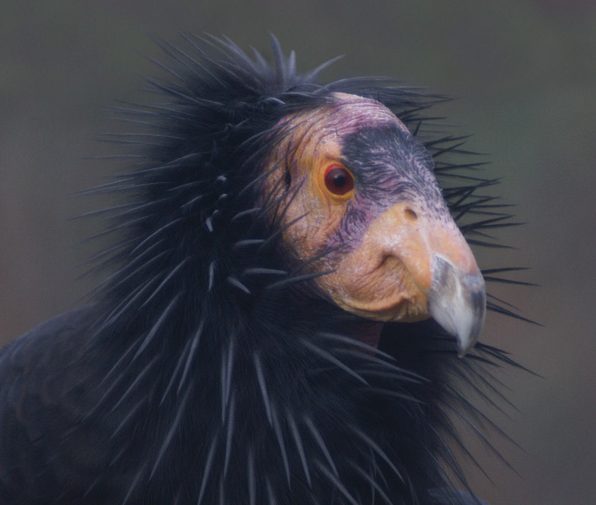
By Lee Sherman Gellatly
The “butifull Buzzard of the Columbia ” was Captain William Clark’s descriptor in 1805 for the prehistoric vultures he observed riding thermals on 9-foot wings in the Columbia River Gorge. Yet just 100 years later, the giant condors were all but gone in Oregon.
Now, ornithologist Susan Haig is helping to bring them back. At a “super-secret” location somewhere in Oregon (“If I told you where it is, I’d have to kill you,” she jokes), the U.S. Geological Survey scientist has joined ranks with the Oregon Zoo and others to reinstate the California condor (Gymnogyps californianus) to its original range along the Pacific coast.
“North America’s largest avian scavenger … once soared the skies of the Pacific Northwest and (is) deeply woven into the fabric of many Native American cultures in the region,” writes Haig, a courtesy professor of wildlife ecology at Oregon State University, in her 2013 book, California Condors in the Pacific Northwest, co-authored with Ph.D. student Jesse D’Elia. “Soon after 1900, however, the condor disappeared from its northern haunts.”

Mainly, the condors died from eating the carcasses of wolves and other predators poisoned by farmers and trappers. As the condors’ range shrank to a small pocket in Southern California, they succumbed further to shell-thinning pesticides and “secondary poisoning” from scavenging the guts of dead animals killed with lead-laced bullets and shotgun pellets. Haig was a student in raptor ecology at the University of Wisconsin in 1981 when condor researcher Mike Wallace (then a UW grad student) “took the last condor chick out of the wild” for captive breeding to save the species.

But it wasn’t until a couple of years ago that Haig really clicked with condors. That’s when the American Ornithologists’ Union (AOU) invited her to serve on a national condor review panel. After visiting every captive-breeding facility in the country, she came home bursting with superlatives about condor braininess. “For me, there wasn’t anything especially magnetic about them until I really spent some time with them,” she says. “It almost freaks you out how intelligent they are.”
Her personal passion is fieldwork — “sitting and watching the amazing social systems of birds,” natural phenomena she describes as “so damned cool that you just can’t stand it.” But as the planet warms, forests burn, wetlands shrink and icecaps melt, Haig worries about the fate of threatened and endangered birds — not just condors, but piping plovers, oystercatchers, red cockaded woodpeckers, Micronesian kingfishers and other species teetering in a wobbly world.

So for now, she has hung up her binoculars to focus on the big picture: untangling the Gordian knot of clues — biological, physical, chemical — wherein deeper avian insights lie. To that end, she leads integrative studies spanning fields as diverse as genetics, landscape ecology and climate science. She teaches in distant places, like Namibia, Kenya, Mexico and Brazil. She enables hemispheric-wide data sharing through her development of the Migratory Connectivity Project with Smithsonian partner Peter Marra. She presides over the illustrious AOU. And she pushes for bird-friendly policies.
Take lead ammo, for instance. Next year, the Yurok tribe will release condors onto its reservation along the California-Oregon border — condors that will soar into Oregon, unaware of the risks their northward travels entail. That’s because while California is phasing out lead ammunition for hunters under a 2014 law, Oregon is just beginning to consider the issue. Haig has been churning out papers and sitting on committees, calling attention to the dangers of lead ammo on both animals and humans. “Oregon lawmakers,” she says, “are beginning to take notice.”
___________________
Oregon State ornithologists are carrying out studies from the Oregon coast to the Willamette Valley, Cascade Range, Columbia Plateau and the Zumwalt Prairie. See Avian Nations in the fall 2014 issue of Terra.
